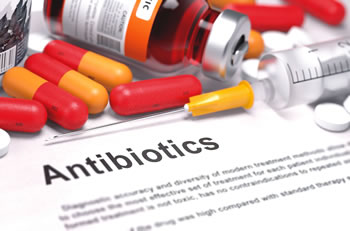
In a statement made available to The PUNCH on Wednesday, the group revealed that the said infographics had been published in 50 African languages, including Pidgin English and the three major Nigerian languages – Igbo, Yoruba and Hausa.
Antimicrobial resistance is resistance of a microorganism such as bacteria, fungi, viruses and some parasites to an antimicrobial medicine to which it was originally sensitive. As a result, antimicrobials e.g. (antibiotics, antifungals, antivirals) become ineffective and infections become difficult to treat.
AMR is primarily driven by misuse of these medicines and according to the group, it has the potential to cause not only 10 million deaths annually by 2050 but also push 28.3 million people to poverty.
The statement read, “AMR is a One Health issue, meaning it needs collaboration between the human, animal and environmental health sectors. Research evidences have reported that most people in the communities don’t understand AMR nor do they know what a threat AMR is or why we need to use our medicines more judiciously.
“AMR terminology is quite complex and has geographic, disciplinary, and societal variations that affect understanding and interpretation. Thus, without simple, clear, and translated AMR messages, populations are misinformed, and left with popular myths and belief systems regarding the use of antibiotics.
“Our team at Alliance Against Antimicrobial resistance (Triple-A) led by Yusuf Babatunde and Naomi Chikezie collaborated with Ducit Blue Foundation led by Pharmacist Estelle Mbadiwe under their youth against antimicrobial misuse (YAAM) project to develop evidence based antimicrobial resistance (AMR) messages into a one-page infographic.
“The one-pager gave a short and simple description of AMR and what individuals reading the content should do in their respective homes and communities to prevent infection spread and improve antimicrobial use. We then crowdsourced ideas from young people all over Africa to translate the one-page infographic into over 50 local languages.
“By providing simple, clear, evidence-based, translated, and unambiguous AMR messages, we want to ensure that the global effort against antimicrobial resistance is tailored to various African communities so the right action can be taken.
“These translated AMR messages were then disseminated onsite by going to hard-to-reach and often neglected populations in Nigeria. Our AMR champions visited local markets, farms, schools, and bus stops across 3 states in Nigeria (Kwara, Oyo, and Borno State) to share these messages and made concentrated efforts to ensure the heart of the messages is communicated clearly.
“This project was also replicated in Senegal, Kenya, and Uganda. In addition, a 3-day massive social media campaign on the translated infographics was also conducted on Twitter and Instagram. LinkedIn, and WhatsApp. So far, from the webpage analytics, over 800 people across 38 countries have viewed our translated infographics.
“A total number of 254 people have downloaded the infographics for their own individual campaigns in their respective countries. Also, we have over 74,000 engagements across our social media pages on Twitter, Instagram, Linkedin, and WhatsApp. During the state level awareness activities, we were able to reach more than 3,000 people across the various locations.
“Community engagement can promote antimicrobial resistance (AMR) behavior change as it has the potential to engage communities to create locally relevant solutions, particularly in LMICs. However, in order to change behaviors, engagement with people through AMR education and awareness is necessary to fully understand the subject. We strongly believe our project is a huge step in sparking responsive dialogue in the community on AMR.
“This project was supported by South Centre as part of the world antimicrobial awareness week activities.”





